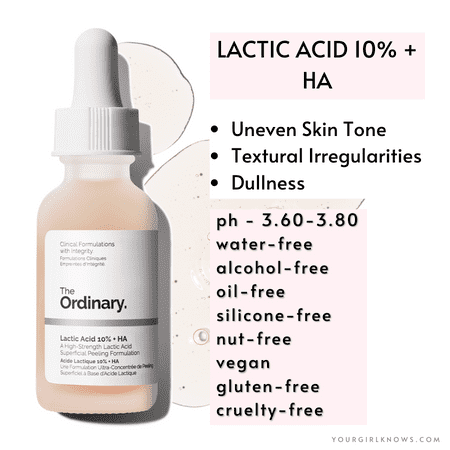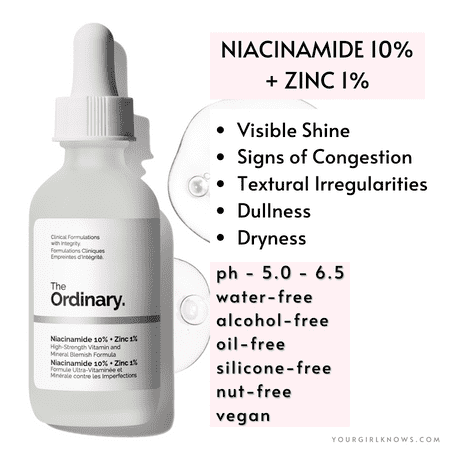Can You Use Lactic Acid and Niacinamide together? Um, you need to know!

I only recommend products I love and I think you will, too. If you click on links I provide, I may receive a little compensation. Learn more.
If you’re like me, then you probably have a cabinet full of skincare products that you’re dying to try. But before you start mixing and matching different serums, creams, and toners, it’s important to know which ingredients can be used together. After all, you don’t want to end up with a red, blotchy face!
Niacinamide and lactic acid are two ingredients that will prove to be a magic potion for your skin concerns, and I’m not just saying that – it has been actually proven!
But using chemical exfoliants is always so confusing. You don’t know what goes with what and how to use them and if you can use two products together.
The same goes for Niacinamide and Lactic acid.
Can you combine them to produce the greatest skin possible? The good news is that I have no issues using both of these substances in the very same skincare regimen.
Lactic acid and niacinamide can be used to produce skin that is even-toned and silky. The outer layer of skin cells is removed by lactic acid, revealing new, younger-looking skin beneath. Niacinamide treats acne and inflammation while battling the effects of aging on the skin.
I’ll explain to you now how you use these two together as well as layer them safely.
What is Lactic Acid?
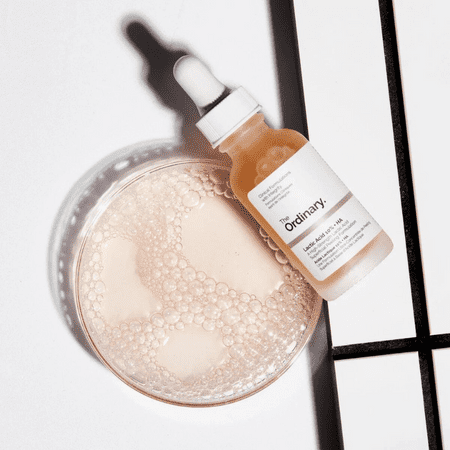
Opposed to glycolic acid, lactic acid is one of the less popular and used AHAs. It is derived from sour milk and fruit sugars. It cannot irritate the skin by penetrating too deeply because of its greater molecular size. It will work on the skin’s outermost layer to remove dead skin cell buildup and pollutants that can frequently block pores and cause congested skin.
Additionally, it has special humectant properties that guarantee it can increase the skin’s inherent moisture content. As a result, the skin can defend itself against environmental irritants and free racial harm, such as pollution and UV radiation.
Benefits of Lactic Acid
Lactic acid is actually my preferred alpha hydroxy acid to utilize because I have sensitive skin. Lactic acid has larger molecules than glycolic acid, which makes it gentler because the larger molecules don’t enter the skin as deeply. For someone who is new to using chemical exfoliants in their routine, it’s a terrific place to start.
Common concentrations of lactic acid are 5% or 10%. It’s odd to find it greater than 10% because, at that point, using a 5% glycolic acid solution would likely work the same or better. Lactic acid has the distinct advantage of moisturizing, which makes it a fantastic option for dry skin as well.
I am low-key obsessed with The Ordinary and how freakin’ cheap they are. And, of course, their magic ability to work wonders for the skin.
my favorite – the Ordinary Lactic Acid 10% + HA Serum
The Ordinary lactic acid serum combines 2% hyaluronic acid, 10% lactic acid, and Tasmanian pepperberry to not only provide the skin with deep moisture and gentle exfoliation but also to calm and relieve irritations brought on by acid use. For sensitive skin types and people new to chemical acids, The Ordinary also offers a 5% lactic acid serum, so you must check that out.
Overall, if you’re not familiar with lactic acid, you might want to introduce it gradually by starting with a smaller amount.
Other dear lactic acids on my list are – Peach and lily power cocktail serum (newer addition but is totally expensive) and Sunday Riley Good Genes serum (expensive but SO DARN GOOD)
What can you not mix with lactic acid?
Even though, Lactic acid can be a seriously helpful skincare ingredient for combating dryness, wrinkles, and dark spots, it’s important to remember that there are some things you should never mix with lactic acid.
First and foremost, stay away from using lactic acid with other exfoliating ingredients like glycolic or salicylic acid. This combination can be too harsh on your skin and potentially lead to irritation. It’s also a good idea to avoid mixing lactic acid with retinol or vitamin C, as these ingredients have various pH levels that could disrupt each other’s effectiveness.
So when using lactic acid, it’s best to stick to just using it alone and allowing your skin time to adjust before adding in any other active skincare ingredients. And always remember to use sunscreen when using lactic acid – else those brighter complexion benefits won’t last long if you end up with sun damage!
What is Niacinamide?
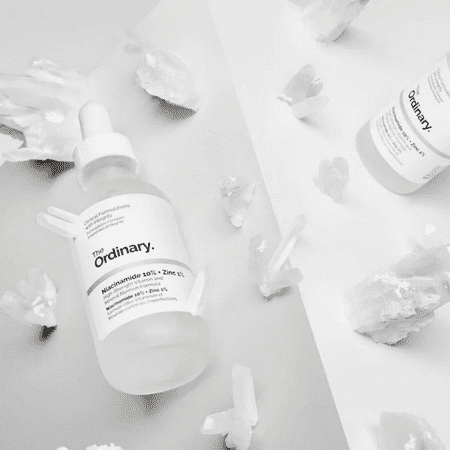
This multi-talented skin component can minimize pores’ appearance, lock in moisture to the skin’s surface, and address any difficulties with hyperpigmentation and dark spots. Your skin will continue to be in its healthiest state if you maintain the oil layer of the skin.
Not only that, niacinamide has the extra benefit of controlling sebum production over other chemical exfoliants, so all skin types can use and love this gifted humectant by incorporating it into their skincare routine.
Benefits of Niacinamide
In recent years, the vitamin B3 compound nicotinamide, often known as niacinamide, has gained immense popularity in skincare and cosmetic products for its visible brightening effects. It is an antioxidant that has numerous advantages for all skin types.
Antioxidants combat free radicals, which harm your skin and contribute to wrinkles, sagging skin, and other aging symptoms. Your skin cells are attacked by free radicals that are produced by things like the sun, pollution, and cigarette smoke.
- Additionally, niacinamide reduces hyperpigmentation. Our uneven skin tone and dark blotches from sun exposure make us look older. Niacinamide formulas of 2% and 5% dramatically decreased hyperpigmentation in this research within just four weeks.
- You’ll be glad to know that niacinamide is also fantastically good at treating acne. Not only it’s good news for oily acne-prone people, but sensitive or dry skin types as well because most of the other acne treatments on the market are for oily skin and dry out the skin even more.
It has been demonstrated that niacinamide is just as efficient as salicylic acid and benzoyl peroxide, despite its reputation for being mild and having few adverse effects.
The last of these many advantages of niacinamide is its anti-inflammatory properties. This is quite advantageous for me because I have very light, delicate skin. I frequently feel as though my skin is swollen and red very easily. I’ve found that niacinamide works well for me in this area and generally helps my skin look less red and more brightened.
What’s my favorite niacinamide? Of course, The Ordinary is on the list, but I’ve tried many others that have worked great for me.
The Ordinary Niacinamide 10% Zinc 1% Serum.
Niacinamide serum from The Ordinary combines 1% zinc and 10% niacinamide to boost the formula’s ability to reduce inflammation and control oil production. As it has anti-inflammatory and anti-aging properties that help treat inflammatory acne, decrease inflammation, minimize early symptoms of age, including wrinkles and fine lines, and regulate oil production, zinc works in conjunction with other vitamins and minerals to treat skin lesions.
The ones from Good Molecules (super cheap and insanely effective) and Inkey List Oil control serum (Also cheap and perfect for oily/combination skin) are also brilliant, and I love them for how they work for sensitive as well as acne-prone skin really well.
What can you not mix with niacinamide?
But before adding niacinamide to your skincare routine, it’s important to know what ingredients should not be mixed with this powerhouse nutrient. First, avoid mixing niacinamide with any vitamin C products (also known as ascorbic acid). This combination can potentially lead to skin irritation.
And steer clear of peptides and acidic products like AHA and BHA exfoliants – these can also potentially cancel out the benefits of niacinamide.
But fear not! Niacinamide is actually a fantastic addition to many skincare routines. So go ahead and add niacinamide to your daily skincare regimen – just be sure to check the labels before adding any other active ingredients into the mix.
Can You Use niacinamide and Lactic Acid Together in the Same Skincare Routine?
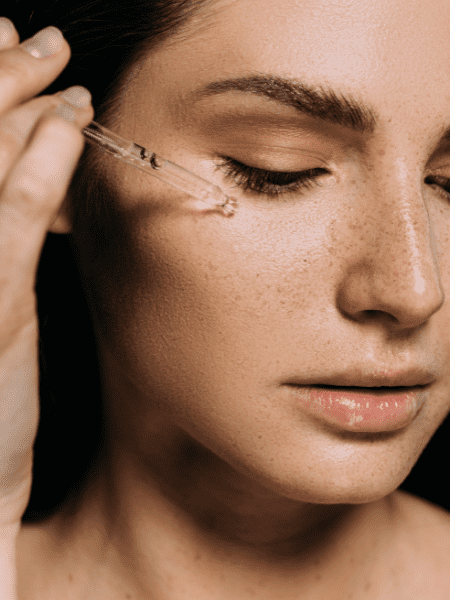
It’s important to note that niacinamide and lactic acid should not be used simultaneously. This is because niacinamide can deactivate the lactic acid, rendering it ineffective.
But that doesn’t mean you cannot build a skincare routine with these two gorgeous beauties. You just need to follow a few instructions to keep your skin safe and supple.
It all boils down to pH when coupling niacinamide and lactic acid, which gauges how acidic or basic a solution is.
Water has a neutral pH of 7.0 on the pH scale, which goes from 0 to 14. The pH of our skin typically ranges from 4.7 to 5.75. Yes, it’s usually acidic in nature. Lactic acid and other exfoliating acids are commonly designed with a pH range of 3–4, but niacinamide formulations typically have a pH range of 5.0–7.0.
Read that again if it confuses you.
If you wish to use lactic acid and niacinamide in the same skincare routine, you’ll need to wait a while between applications because their pH ranges are different.
Do you also wanna know if you can use glycolic acid and niacinamide together? I guess it’s time to check out this article!
How To Use Lactic Acid and Niacinamide in the same routine

Make sure to apply the ingredients in the correct order before combining the two. Lactic acid must be used on bare, clean skin because it is an exfoliator. I apply lactic acid immediately after cleansing, generally in the evening. Although it can be used in the morning as well since it’s not too daunting (I mean harsh), I like to apply any exfoliator in the evening and an antioxidant serum in the morning.
You simply need to wait until the lactic acid is fully immersed into your skin before applying the niacinamide when using them together. Since lactic acid seems to have a lower PH level than other acids, many people believe that it should be allowed some time to function before being administered.
A safe time gap is of 10-20 minutes or until the lactic acid has been absorbed completely and your skin starts to feel dry again.
Does niacinamide go before lactic acid?
Niacinamide is suggested to be used following lactic acid. It’s because lactic acid can effectively exfoliate the skin, and niacinamide can help replenish moisture in the skin barrier afterward.
And obviously, pH plays a role as well. Because of its higher pH, niacinamide works primarily on the surface and permeates less into the epidermis’ deeper layers. Lactic acid can penetrate further since it has a lower pH, making it more acidic.
However, it is still much gentler than its stronger mates, such as glycolic acid and malic acid.
While it may seem like a minor issue, different pH levels are frequently the main reason why the skin becomes irritated. Because of the skin’s naturally acidic pH balance, some active substances may cause an imbalance. Always make sure to give the pH level adequate time to settle and become ready for the next application of an item. The ideal duration is thought to be 15 minutes or longer, which will assist prevent unintended skin irritation.
How to Layer Niacinamide and Lactic Acid
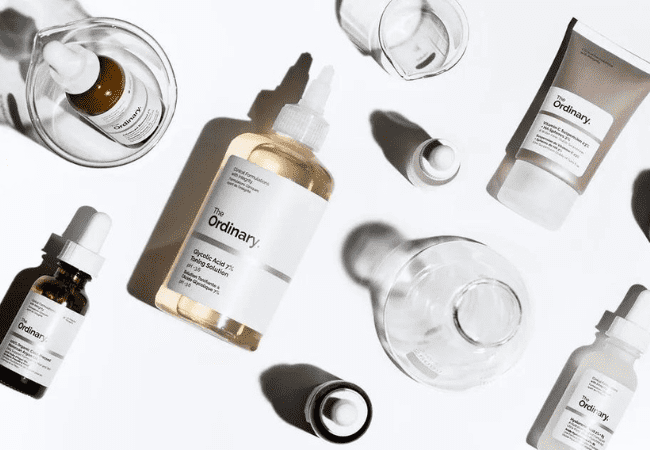
If you use a lactic acid product first and then niacinamide right away, the niacinamide product may raise the pH of the lactic acid solution and lessen its efficacy. Additionally, your skin may become red, irritated, or flushed.
Apply your niacinamide serum after using lactic acid as chemical exfoliation. Niacinamide should be laid on top of lactic acid at least 10-20 minutes after the lactic acid has had time to soak completely into the skin.
If not, consider applying niacinamide in the daytime and lactic acid at night because lactic acid can leave your skin more vulnerable to the sun.
Niacinamide and lactic acid can be used on opposite days if you like.
Is lactic acid weaker than glycolic acid?
Yes, lactic acid is a weaker, gentler acid than glycolic. The major differences between the two are that lactic acid, derived from milk, tends to be gentler and may be a good choice for sensitive or dry skin. Glycolic acid, derived from sugar cane, is more potent and can produce faster results – but it might also cause irritation in those with sensitive skin.
Can you mix lactic acid and niacinamide?
Yes, we can mix lactic acid and niacinamide. However, it’s important to note that they should not be applied at the same exact time. You’ll want to alternate or layer them in separate steps of your routine, giving each enough time to fully absorb into your skin before moving on to the next product.
This way, you can reap all the amazing benefits lactic acid and niacinamide have to offer without causing any irritation or conflict between the two ingredients. And remember, while it’s fine to mix lactic acid and niacinamide in your routine, always do a patch test and listen to your skin!
Is niacinamide the same as niacin?
Even though they both are forms of the same vitamin B3, they are not the same. Niacin, or nicotinic acid, can cause flushing and irritation when applied topically to the skin. On the other hand, niacinamide has been shown to have anti-aging and calming effects on the skin without causing any redness or discomfort.
Final thoughts on can I use lactic acid and niacinamide together
Niacinamide and lactic acid are both great ingredients for your skin. Niacinamide is a form of vitamin B3 that brightens the skin and reduces the appearance of fine lines and wrinkles. Lactic acid is an alpha hydroxy acid (AHA) that exfoliates the skin and improves its texture. When used together, niacinamide and lactic acid can help improve the appearance of your skin.
However, it’s important to note that they should not be used at the same time. For best results, use niacinamide in the morning and lactic acid at night.
related articles on using lactic acid and niacinamide together
- Can I Use Glycolic Acid With Niacinamide? You Need To Know This!
- 17 Best Drugstore Vitamin C Serums For Radiant, Glowing Skin
- Hyaluronic Acid Vs Retinol: Which Is Better for your skin?
- 10 Best The Ordinary Products For Acne Scars That Actually Work

